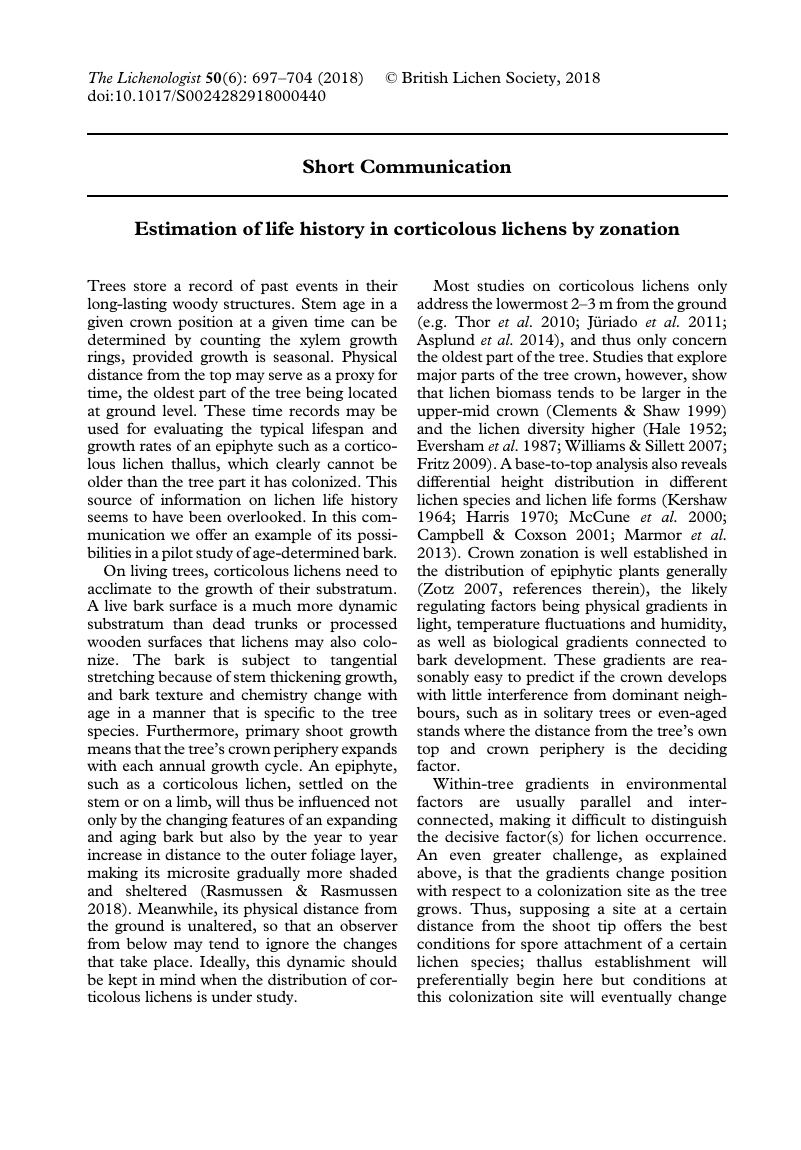Crossref Citations
This article has been cited by the following publications. This list is generated based on data provided by Crossref.
Ellegård Larsen, Hanne Marie
Hansen, Eric Steen
Nord-Larsen, Thomas
and
Rasmussen, Hanne Nina
2020.
Deciduous trees as lichen phorophytes: biodiversity and colonization patterns under common garden conditions.
The Lichenologist,
Vol. 52,
Issue. 3,
p.
221.
Palharini, Kelly Maria Zanuzzi
Vitorino, Luciana Cristina
Menino, Gisele Cristina de Oliveira
and
Bessa, Layara Alexandre
2020.
Edge Effects Reflect the Impact of the Agricultural Matrix on the Corticolous Lichens Found in Fragments of Cerrado Savanna in Central Brazil.
Sustainability,
Vol. 12,
Issue. 17,
p.
7149.
Larsen, Hanne Marie Ellegård
and
Rasmussen, Hanne Nina
2021.
Bark extract influence on spore germination in corticolous lichen Xanthoria parietina in vitro.
Mycological Progress,
Vol. 20,
Issue. 3,
p.
313.
Parviainen, Annika
Rosca, Carolina
Rondon, Deyanira
Casares Porcel, Manuel
and
Martín-Peinado, Francisco José
2024.
Assessment of atmospheric pollution by potentially toxic elements in the urban areas of the Riotinto mining district.
Chemosphere,
Vol. 363,
Issue. ,
p.
142906.
Moreno-Palacios, Miguel
Torres-Benítez, Alfredo
Soto-Medina, Edier
Sánchez, Marta
Divakar, Pradeep K.
Pereira, Iris
and
Gómez-Serranillos, María Pilar
2024.
Corticolous Lichen Communities and Their Bioindication Potential in an Urban and Peri-Urban Ecosystem in the Central Region of Colombia.
Land,
Vol. 13,
Issue. 7,
p.
932.



